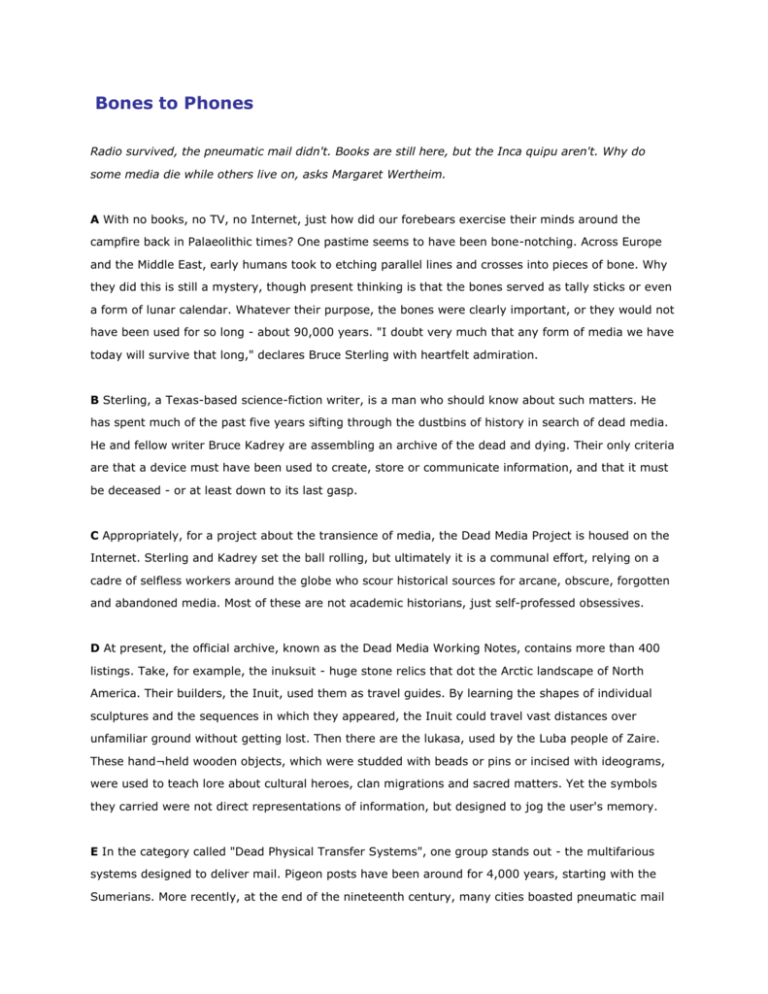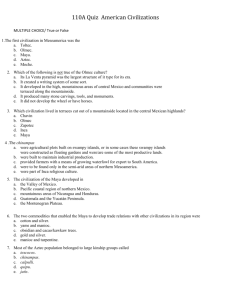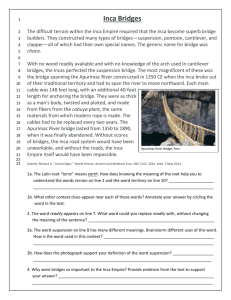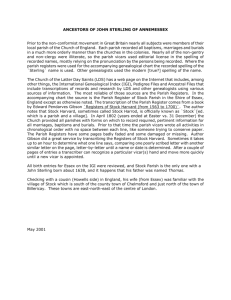Bones_to_Phones
advertisement

Bones to Phones Radio survived, the pneumatic mail didn't. Books are still here, but the Inca quipu aren't. Why do some media die while others live on, asks Margaret Wertheim. A With no books, no TV, no Internet, just how did our forebears exercise their minds around the campfire back in Palaeolithic times? One pastime seems to have been bone-notching. Across Europe and the Middle East, early humans took to etching parallel lines and crosses into pieces of bone. Why they did this is still a mystery, though present thinking is that the bones served as tally sticks or even a form of lunar calendar. Whatever their purpose, the bones were clearly important, or they would not have been used for so long - about 90,000 years. "I doubt very much that any form of media we have today will survive that long," declares Bruce Sterling with heartfelt admiration. В Sterling, a Texas-based science-fiction writer, is a man who should know about such matters. He has spent much of the past five years sifting through the dustbins of history in search of dead media. He and fellow writer Bruce Kadrey are assembling an archive of the dead and dying. Their only criteria are that a device must have been used to create, store or communicate information, and that it must be deceased - or at least down to its last gasp. С Appropriately, for a project about the transience of media, the Dead Media Project is housed on the Internet. Sterling and Kadrey set the ball rolling, but ultimately it is a communal effort, relying on a cadre of selfless workers around the globe who scour historical sources for arcane, obscure, forgotten and abandoned media. Most of these are not academic historians, just self-professed obsessives. D At present, the official archive, known as the Dead Media Working Notes, contains more than 400 listings. Take, for example, the inuksuit - huge stone relics that dot the Arctic landscape of North America. Their builders, the Inuit, used them as travel guides. By learning the shapes of individual sculptures and the sequences in which they appeared, the Inuit could travel vast distances over unfamiliar ground without getting lost. Then there are the lukasa, used by the Luba people of Zaire. These hand¬held wooden objects, which were studded with beads or pins or incised with ideograms, were used to teach lore about cultural heroes, clan migrations and sacred matters. Yet the symbols they carried were not direct representations of information, but designed to jog the user's memory. E In the category called "Dead Physical Transfer Systems", one group stands out - the multifarious systems designed to deliver mail. Pigeon posts have been around for 4,000 years, starting with the Sumerians. More recently, at the end of the nineteenth century, many cities boasted pneumatic mail systems made up of underground pipes. Telegrams and letters shot through the tubes in canisters propelled by compressed air. But perhaps the most bizarre postal innovation was missile mail. On 8 June 1959, at the behest of the US Post Office Department, the submarine USS Barbero fired a fissile containing 3,000 letters at the Naval Auxiliary Air Station in Mayport, Florida. The postal service's website quotes an official at the time saying: "Before man reaches the Moon, mail will be delivered within pours from New York to California, to Britain, to India or Australia by guided missile." Sadly, the trial did not spark off a postal revolution. F With his knowledge of media fossils and what has lived on, has Sterling noticed any qualities that select for survival? "It really depends on the society that gave birth to it," he says. "It helps a lot if it is the nerve system of how government information is transmitted." At the very least, he argues, successful media need a close association with some form of power in society. The Inca quipu illustrates the point. The Inca did not write, but kept records on complex arrangements of coloured, knotted strings, some weighing up to twenty kilograms and carrying tens of thousands of knots. These knots were tied by an official class - the Inca equivalents of historians, scribes and accountants. G Unfortunately, the guipu did not survive long, but were burnt by the Spanish invaders. This demonstrates, as Sterling puts it, that media can be murdered. He believes that but for the Spanish, quipu could have been taken a great deal further. They are his favourite dead media. "One of the things that really fascinates me is that they were networks," he says.“They had directories and even sub¬directories, and all this just with strings and knots”. H Kadrey has noted another feature of long-lasting media: they tend to be simple. There are systems for sending messages with light, which have been invented time and again, starting with the Babylonians, Romans and Imperial Chinese, who operated a network of fires along the Great Wall. Before the invention of electrical telegraphy, the Russians, Czechs, British and Australians all experimented with optical telegraphy. These attempts may vary in their levels of sophistication but they're all based on the same simple idea. "All a person needs is a shiny thing and the Sun," says Kadrey. I Another shining example that draws the admiration of both Sterhng and Kadrey is that old standby, the book. "I have this argument all the time," Kadrey says. "So many people today claim that the book is dead. I don't believe it for a minute," he says. "It's a very powerful technology. Books are so dumb, just ink on a page, but they've lasted so long!" Questions №1 The reading text has nine paragraphs (A-I). Choose the most suitable heading foreach paragraph from the list of headings below. List of Headings 1- It's also possible to destroy media 2- Examples of unsuccessful dead media 3- An experimental medium which was not developed 4- A long-lasting but mysterious dead medium 5- The first item collected for the Dead Media Project 6- A visual aid for teaching 7- How are dead media defined? 8- The belief that this medium is dead is mistaken 9- Academic uses of the Dead Media Working Notes 10- A design feature shared by several successful media 11- The importance of a medium's role in society 12- Where the Dead Media Project can be found Questions №2 Choose the appropriate letter A-D. 1 - What is the main role of Sterling and Kadrey in the Dead Media Project? A - They have collected the majority of the dead media in the archive. В - They were responsible for initiating the research. С - They are writing a book about the subject. D - They travel round the world searching for dead or dying media. 2 - What is Sterling's opinion about the Inca quipu'? A - They represent the most important records of the time. В - They were unnecessarily complicated. С - They will never be fully understood. D - They had potential for further development. 3 - Which medium is mentioned as having been especially long lasting? A - bone-notching В - pigeon post С - Inca quipu D - the book Focus on IELTS Tags: media, text Posted on Aug. 10th, 2010 at 12:17 pm | Link | Leave a comment | 1 comment | Add to Memories | Share Comments Answers Answers №1 A–4 B- 7 C- 12 D- 6 E- 3 F- 11 G- 1 H- 10 I- 8 Answers №2 1- B 2- D 3- A From: http://exam-prep.livejournal.com/81109.html











